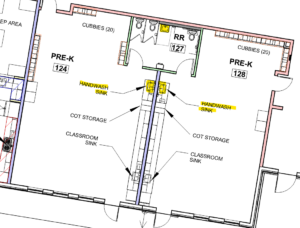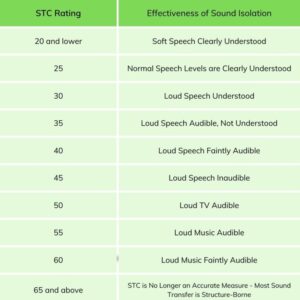Construction Types V-A and V-B in the International Building Code
Section 6 of the International Building Code defines types of construction for buildings. The type of construction that you select is important because it tells you how big and how tall a building you can construct for your occupancy.
For small commercial projects, the most common construction types are V-A and V-B. (The V is the Roman numeral 5, so 5-A and 5-B).
V-B is the least restrictive building type with regard to materials. You can build your building out of any material and it doesn’t need to be rated. It is also the most restrictive in terms of size restrictions in Table 503.
V-A gives you a lot more options if your building can’t work as an unrated structure. In order to move from 5-A to 5-B you must provide a minimum 1-hr rating for your structural frame and/or bearing walls and your floor and roof construction including supporting beams and joists. These ratings can be achieved through fire resistant construction of the assemblies or by providing an approved automatic fire sprinkler system. Even with a sprinkler your exterior walls have to be rated.
If you choose to use the fire sprinklers to move from V-B to V-A, you can’t double dip and use them for other area increase factors.
If you’re looking to work with consultants who are consistently getting practical experience in the field, let us know. EVstudio would love to work with you.
[Editor’s note: This post was written in July 2009, and updated with a hyperlink in June 2023.]












10 thoughts on “Construction Types V-A and V-B in the International Building Code”
what does the b stand for?
what does the a stand for?
Type V-B & OCC R2 wood construction, my question iscan can we run romex in electrical instalation?
Did you guys make a mistake in introduction to the topic when you said :” In order to move from 5-A to 5-B you must provide a minimum 1-hr rating for your structural frame ” meaning if you want to move from 5-B to 5-A…?
Thanks,
Michele, I hope I can further clarify. VB doesn’t require ratings or sprinklers. If you want to go to VA you can either go with sprinklers or ratings. If you need to use the area increases for sprinklers then you need to do both the ratings and the sprinklers.
I am confused from your response above. I have read Table 601 a few times to determine when a building changes from a VA to VB through material choice. Column B does not refer to any of the footnotes and 602.5 states that Type V construction is any material permitted by this code. In addition the value 0 is provided. Is your response based on the premise that fire sprinklers are now required in all commercial structures and to deviate from this requirement in VB construction the materials used must be fire resistant?
Hi Mark, the explanation that you found has oversimplified it a bit. It is correct that Type II and V B have no ratings, but type IIIB requires a 2 hour rated exterior wall and IB requires everything but nonbearing interior walls be rated. With the A types the ratings vary from 1 to 3 hours and sometimes sprinklers can be substituted for rating. Look at Table 601 and then ask an architect for further clarifications.
Phil, there is not an actual explanation in the 2009 IBC for the differences/specifics of “A” vs. “B” so I struggled with this until I finally did enough searching on the web to find this explanation which helped me. Hope the following helps you. Good luck!
“A” is protected, meaning that all structural members of a building or structure have an additional fire rated coating or cover by means of sheetrock, spray on, or other approved method. The additional fire rated coating or cover extends the fire resistance of the structural members by at least 1 hour.
“B” is unprotected, meaning that all structural members of a building or structure have no additional fire rated coating or cover. Exposed members are only fire resistant according to their natural ability, characteristics, and fire rating.
Sure Phil. Chapter 6 contains all of the information on types of construction. 602.5 defines Type V but doesn’t tell you much. What you’re really looking for is Table 601 on page 89.
It tells you that the difference is in V-A you have to rate the frame, bearing walls, floor construction and roof construction. It also tells you that you can substitute a sprinkler for the ratings unless you are using the sprinkler to get other area increases.
I don’t envy you learning a new building code, the IBC isn’t light reading.
Thanks for this. In Massachusetts we’re transitioning from years of our own code to the IBC 2009 (with some amendments). Types VA and VB are what we used to call Type 5 Protected and Unprotected in the Mass code.
What I’m having trouble with is where sub-types A and B are actually defined in the IBC. Can you, or anyone point out chapter and verse in the IBC 2009 for me?
Thank you for the explanation of Type VA and VB construction. You wouldn’t believe how few people really understand it. Can’t say I do but you really helped.
BTW, great website. It looks like you guys do some awesome work!
Chris Lakin P.E., CBIE
President Plateau Inc.
Montrose, CO
Comments are closed.